Attributes Military attire Name Saint Longinus | ||
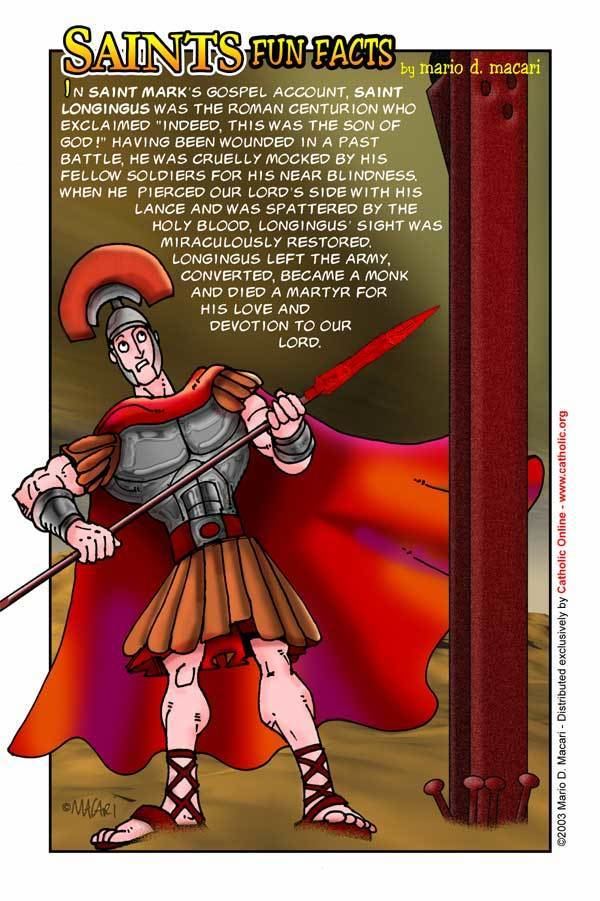 | ||
Venerated in Coptic Orthodox ChurchEastern Orthodox ChurchesOriental OrthodoxyRoman Catholic Church Feast March 15: Roman Catholic Church; October 16: Eastern Orthodox Churches; October 22: Armenian Apostolic Church; November 14: Coptic Orthodox Church People also search for Dana Burnet, Mathias Herrmann, Albert Dekker | ||
St longinus executioner convert and martyr
Longinus is a legendary name of Christian history given in medieval and some modern Christian traditions to the Roman soldier who pierced Jesus in his side with a lance, the "Holy Lance" (lancea, as related in the Latin Vulgate Bible) during the Crucifixion. This act created the last of the Five Holy Wounds of Christ.
Contents
- St longinus executioner convert and martyr
- L drago dragoon comeback lost longinus n sp starter b 66 unboxing review beyblade burst
- Origins of the legend
- Present day veneration
- In popular culture
- References
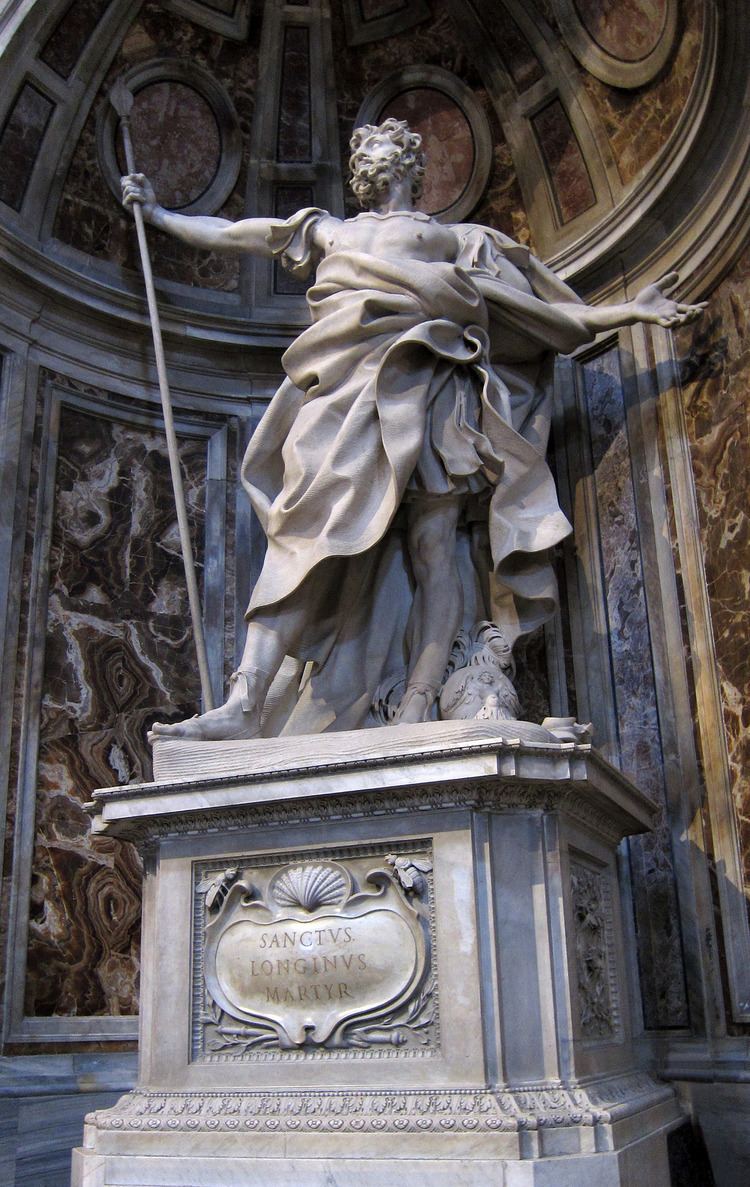
This individual, unnamed in the Gospels, is further identified in legend as the centurion present at the Crucifixion, who testified "This man certainly was the Son of God." Longinus' legend grew over the years to the point that he was said to have converted to Christianity after the Crucifixion, and he is traditionally venerated as a saint in the Roman Catholic Church, Eastern Orthodox Church, and several other Christian communions.
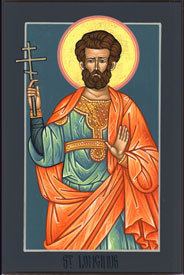
L drago dragoon comeback lost longinus n sp starter b 66 unboxing review beyblade burst
Origins of the legend

No name for this soldier is given in the Gospels; the name Longinus is instead found in the pseudepigraphal Gospel of Nicodemus that was appended to the apocryphal Acts of Pilate. Longinus did not start out as a saint. An early tradition, found in the 4th-century pseudepigraphal "Letter of Herod to Pilate", claims that Longinus suffered for having pierced Jesus, and that he was condemned to a cave where every night a lion came and mauled him until dawn, after which his body healed back to normal, in a pattern that would repeat till the end of time. Later traditions turned him into a Christian convert, but as Sabine Baring-Gould observed: "The name of Longinus was not known to the Greeks previous to the patriarch Germanus, in 715. It was introduced amongst the Westerns from the Apocryphal Gospel of Nicodemus. There is no reliable authority for the Acts and martyrdom of this saint." However, an old tradition does link the birthplace of Longinus with the village of Anxanum (Lanciano), Samnite territory, in today's Abruzzo region of central Italy.
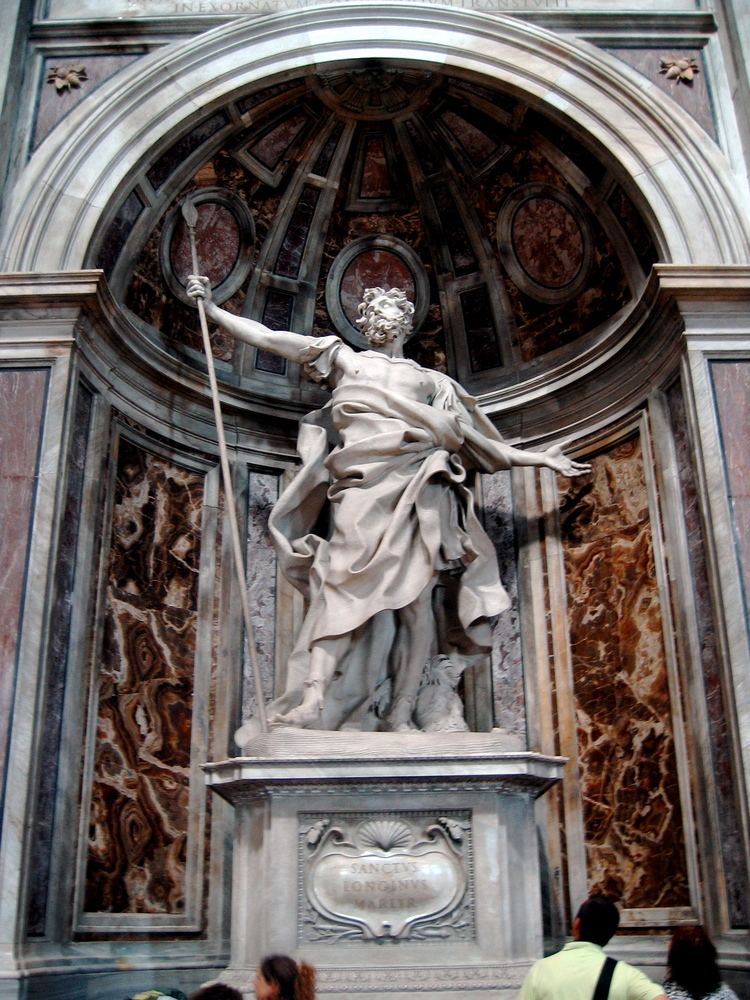
The name is probably Latinized from the Greek lonche (λόγχη), the word used for the lance mentioned in John 19:34. It first appears lettered on an illumination of the Crucifixion beside the figure of the soldier holding a spear, written, perhaps contemporaneously, in horizontal Greek letters, LOGINOS (ΛΟΓΙΝΟϹ), in the Syriac gospel manuscript illuminated by a certain Rabulas in the year 586, in the Laurentian Library, Florence. The spear used is known as the Holy Lance, and more recently, especially in occult circles, as the "Spear of Destiny", which was revered at Jerusalem by the sixth century, although neither the centurion nor the name "Longinus" were invoked in any surviving report. As the "Lance of Longinus", the spear figures in the legends of the Holy Grail.

In some medieval folklore, such as the Golden Legend, the touch of Jesus's blood cures his blindness:
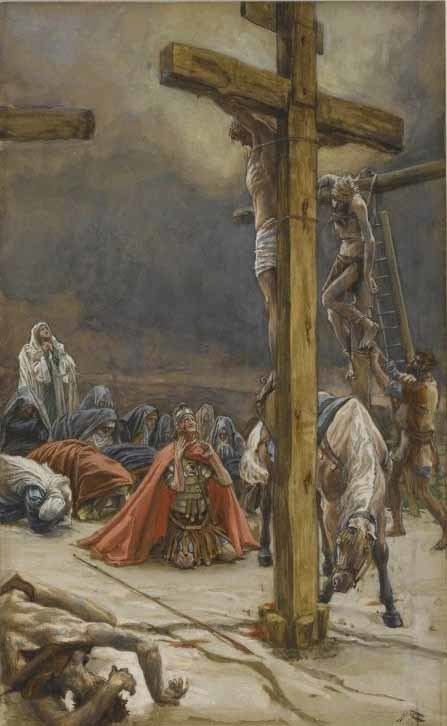
Christian legend has it that Longinus was a blind Roman centurion who thrust the spear into Christ’s side at the crucifixion. Some of Jesus’s blood fell upon his eyes and he was healed. Upon this miracle Longinus believed in Jesus.
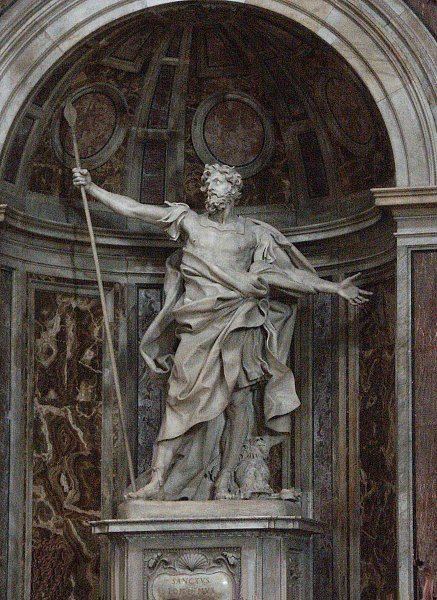
The body of Longinus is said to have been lost twice, and that its second recovery was at Mantua in 1304, together with the Holy Sponge stained with Christ's blood, wherewith it was told—extending Longinus' role—that Longinus had assisted in cleansing Christ's body when it was taken down from the cross. The relic, corpules of alleged blood taken from the Holy Lance, enjoyed a revived cult in late 13th century Bologna under the combined impetus of the Grail romances, the local tradition of eucharistic miracles, the chapel consecrated to Longinus, the Holy Blood in the Benedictine monastery church of Sant'Andrea, and the patronage of the Bonacolsi.
The relics are said to have been divided and then distributed to Prague and elsewhere, with the body taken to the Basilica of Sant'Agostino in Rome. However, official guides of the Basilica do not mention the presence of any tomb associated with Saint Longinus. It is also said that the body of Longinus was found in Sardinia; Greek sources assert that he suffered martyrdom in Gabala, Cappadocia.
Present-day veneration
Longinus is venerated, generally as a martyr, in the Roman Catholic Church, the Eastern Orthodox Church, and the Armenian Apostolic Church. His feast day is kept on 16 October in the Roman Martyrology, which mentions him, without any indication of martyrdom, in the following terms: "At Jerusalem, commemoration of Saint Longinus, who is venerated as the soldier opening the side of the crucified Lord with a lance". The original feast day of 15 March is still maintained in the liturgical calendar in the Extraordinary Form. The Eastern Orthodox Church commemorates him on 16 October. In the Armenian Apostolic Church, his feast is commemorated on October 22.
The statue of Saint Longinus, sculpted by Gian Lorenzo Bernini, is one of four in the niches beneath the dome of Saint Peter's Basilica, Vatican City. A spearpoint fragment from the Holy Lance is also conserved in the Basilica.
Longinus and his legend are the subject of the Moriones Festival held during Holy Week on the island of Marinduque, the Philippines.
